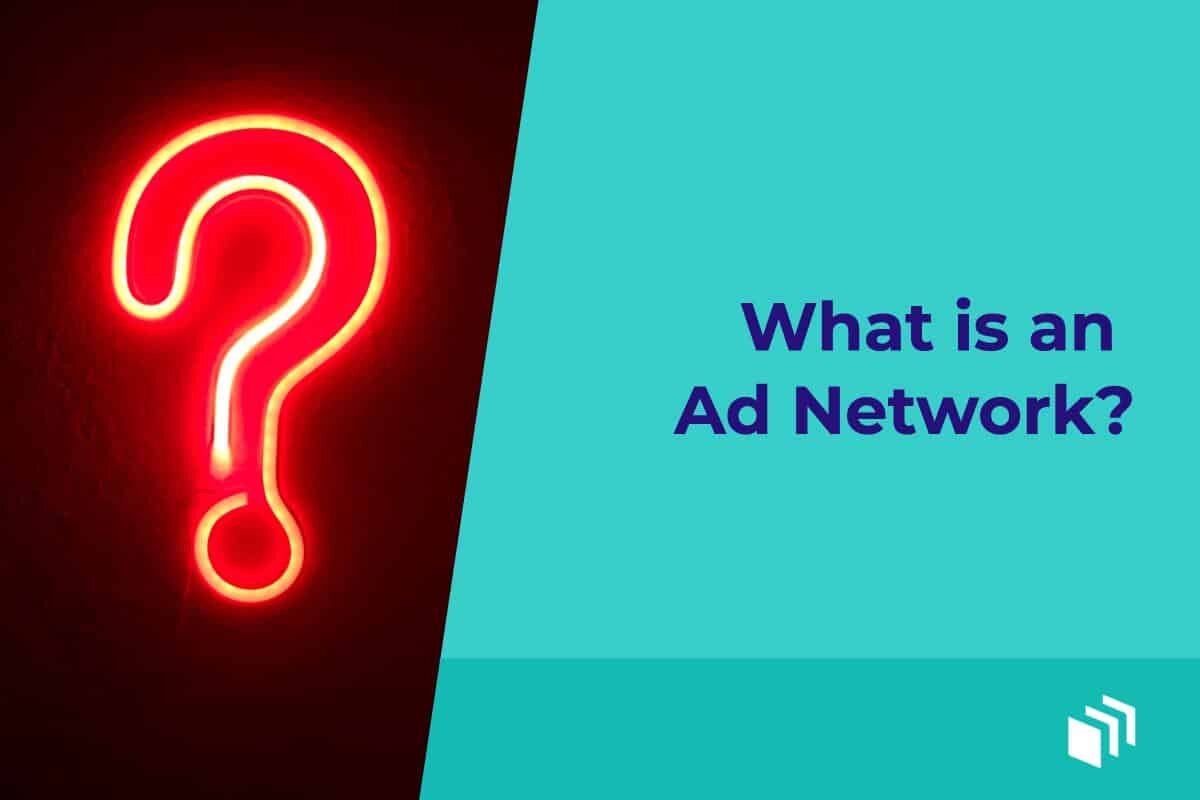What is an Ad Network?

It’s hard to imagine the internet without banner advertisements.
But believe it or not, web pages were free from banners all the way up until 1994, when Hotwired (Wired magazine’s website) displayed the first banner advertisement for AT&T (which received an astounding 44% click-through rate!).
Once that first advertisement was placed, others quickly followed suit. Websites were now fair game for advertising. For advertisers, finding the digital ad space to place their ads on was a time-consuming process. Similarly, publishers struggled to land direct sponsorships for their pages.
And so, ad networks were created.
What is an Ad Network?
An ad network, short for advertising network, is a company that connects advertisers to websites that want to host advertisements. Basically, ad networks act as middlemen between advertisers and publishers. They make it possible for websites to sell their ad space and advertisers to buy digital ads across a range of publisher sites, apps, etc.
Ad networks have been with the internet for a while now. But as with all things digital, they are relatively new in the grand scheme of things and are constantly evolving and changing.
Why Do We Need Ad Networks?
Over the years, ad networks have become vital to the digital advertising ecosystem. They serve as both a technical and commercial intermediate between advertisers and publishers.
Say you have a website that’s performing well that you’d like to monetize. Without an ad network, you’d have to reach out to each potential advertiser individually. You’d be responsible for finding the potential advertiser, negotiating the deals, tracking impressions, and more – for every banner that runs on your site.
With an ad network, you get:
- More choice
- A higher fill rate
- Greater ad reach
- Better ROI
To say that ad networks help improve the quality of life online for both advertisers and publishers is an understatement. Ad networks help monitor campaigns, offer inventory, facilitate payments and transactions, and more.
Are All Ad Networks the Same?
While most ad networks are trying to accomplish the same thing, they can and do vary widely in the type and quality of who’s allowed in, budgets, options, etc.
Some ad networks maintain hyper-exclusivity to control pricing and the types of inventory in the advertising pool. Other ad networks deal in bulk, looking to make their money from high volume.
It’s vital to know your budget, who’s visiting your site, and other details to select the right ad network for your website’s needs.
Some of the Most Common Types of Ad Networks
There are various categorizations of ad networks covering every imaginable range of topics, formats, and audiences. Some of the most common types of ad networks include:
Vertical – Focuses on a specific topic, like gaming, beauty, business, or technology.
Horizontal – Offers the broadest reach and maximum number of impressions since the network isn’t limited by topic.
Targeted – Use technology to target impressions to a specific behavior or context.
Premium – Inventory from the most popular or curated publishers. Sometimes, advertisers have to be invited or pay a subscription fee to gain access to the network. Publishers must prove their website meets specific traffic requirements to distribute in the network.
Inventory-Specific – Specialize in specific types of inventory like mobile-only, banner–only, or video-only advertisements.
The Difference Between Ad Networks and Ad Servers
When looking into hosting ads on your website, you will run across mentions of both ad networks and ad servers. While it’s easy to confuse the two, there is an important distinction between them.
An ad server is a piece of technology (code) )that allows publishers to manage advertisements and advertisers to place their ads on sites.
Ad networks are companies that use ad server technology to help facilitate the connection between advertisers and publishers so that they can find the right publishing platforms for their ads.
How Ad Networks Traditionally Work
First, the ad network develops a list of publishers with unsold space they’d like to sell to buyers (often through bidding). Most ad networks will try to get as many publishers as possible.
Advertisers use the ad network’s campaign-management panel to create a campaign with their requirements. They’ll specify their target audience, budget, frequency cap, etc.
Simultaneously, publishers install ad network tags on their websites.
When a match is found between an advertiser’s demand and a publisher’s supply, ad details are sent to the publisher.
In this traditional scenario, the ad network makes its money by either taking a direct cut of the ad revenue or marking up the publisher’s inventory before reselling it to the advertisers
What to Look For In an Ad Network
There are ad networks of all shapes and sizes. Picking the right one for your needs can seem overwhelming at first. However, knowing your audience, reach, and marketing goals can help you narrow down your search. Not all ad networks work for everyone.
As you research different ad networks, use the following criteria to help narrow down your search:
- Size – Ensure that you’ll have a steady flow of advertisements and any options you require
- Inventory Quality – Your audience will view ads placed on your site as being endorsed by you. Are you OK with what ads are being served?
- Audience Targeting – Does the ad network offer the audience demographics you need?
- Formats Offered – Does the ad network support GIFs or other formats you require?
- Payment Terms – Are you comfortable with the payment terms and payment model offered?
- The infrastructure of the Network – Is the UX/UI experience enjoyable and compatible with your needs?
Some of the Largest Ad Networks
Think you’re ready to get started using an ad network? Here are some of the more popular ad networks. Start your search here to get a feel for what they offer, pricing structures, etc. Also, you don’t have to stick to just one ad network. You can try out different ones to see which performs best for you.
Google Adsense
AppLovin
Media.net
Publift
PopAds
Adcash
Facebook Ads
Wrapping Up
We hope this article helped demystify ad networks for you.
Ad networks offer a win-win scenario for both publishers and advertisers. You must understand ad network capabilities and options if you want to display advertisements on your websites.
Once you’ve selected the right ad network for your WordPress website, you’ll need the right plugin to help manage the ads. AdSanity offers a simple way to insert self-hosted and network ads on your WordPress website. Best of all, AdSanity works with any network you choose, from Google AdSense to Revcontent.
Ready to get started?
There are licenses available for all types of sites needs needs.
Find the AdSanity tier that is right for you.
Want to give AdSanity a try?
Find the plan that fits your site and jump in.
Ready to make your ads work for you?
Pick the plan that fits and get started.
Let’s get your ads running.
Choose the plan that works best for you and start today.
Time to take control of your ads.
Find your perfect plan and go for it.
Ready to Make Money With Your Site?
Get ads on your site in
60 minutes or less
with AdSanity.
With our 14-day money back guarantee, it’s easy to see if AdSanity is the right fit for you.
Tags
Popular Pro Add-Ons
Our Community
Join our mailing list to keep up to date on everything happening with AdSanity and Pixel Jar.
Note: Your email address will be added to our CRM and be used to receive emails from Pixel Jar. You can unsubscribe at any time.



